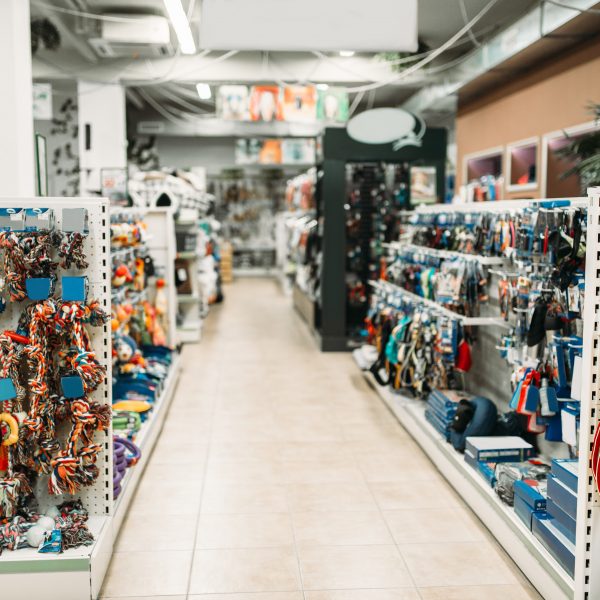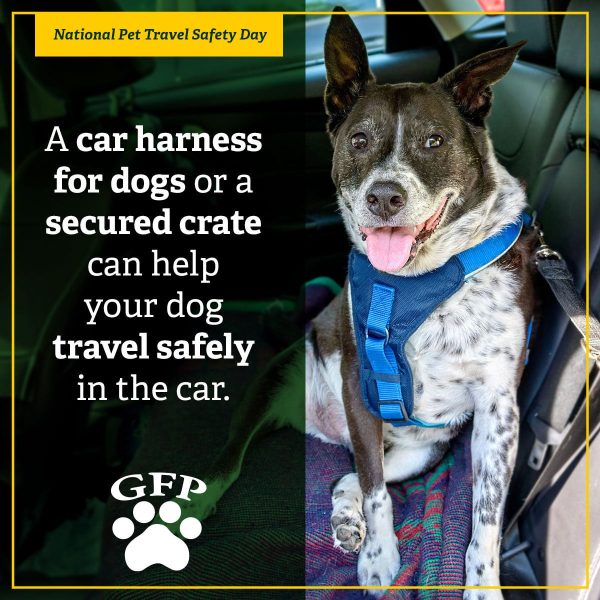16 Must-Haves for First-Time Dog Owners

Adding a dog to your family is an exciting time. If you’ve had a dog before or currently have one, then you probably have a good idea of what you need. But, if it’s your first time owning a dog, it’s easy to get lost in the excitement and end up rushing around to pick up missing items. Instead, use this quick checklist to cover the basics. Here are some must-haves for first-time dog owners:
1. Dog Training Books and/or Classes
Good training is essential for every dog and so is proper socialization. You want to start training and socializing your puppy or dog as soon as you get them home. As a first-time dog owner, you want to make sure you have some idea of what you’re doing. Dog training books can be a great introduction to what you need to know and are one of the must-haves for first-time dog owners.
Aside from that, a professional dog trainer or puppy training classes can be a great resource for putting that information into action. Training classes can be a great idea even if you feel you don’t need them because they help strengthen the bond you have with your dog and also often offer opportunities to socialize a puppy.
2. The Right Dog Bed and a Crate
Your dog will also need somewhere to sleep and a space just for them that helps them feel secure and safe. The right dog bed can give your dog a comfy place to curl up and nap and a crate can help provide that safe and secure nest for them.
There are a lot of options out there, so knowing how to choose a dog bed can be a big help in getting the right one for your dog. When it comes to a crate, you want one that is big enough for your dog to stand up and turn around comfortably. Crate training also comes in handy when you’re house training a puppy and for times when you need to leave your dog home unsupervised.
3. Leash and Harness or Collar
Every dog owner needs a sturdy leash and a harness or collar that is the right fit for their dog. When it comes to a dog collar vs dog harness, there are arguments for one or the other or both. In general, a well-fitted harness can be the safer and more comfortable option.
Plus, many of them come with a ring for displaying the necessary tags. There are several types of harnesses available, so you want to make sure you know how to choose a dog harness to get the right type and size for your dog.
4. The Right Dog Food and Some Treats
Food is one of the ongoing costs of owning a dog and it’s important to get the right kind for your pup. Because you should ease a dog slowly into a different type of food, it’s important to find out what food your dog has been eating and get that before you bring them home. If you want to switch them to a different dog food, you can – you just have to transition them over to it slowly to avoid issues.
If you’re unsure of what the best dog food for your dog is, you can always ask your vet. They’ll be able to give you some tips and recommendations on good food options and on how to successfully transition from one food to another. You also want to pick up some treats to use sometimes for training and rewards.
5. A Variety of Toys
You also want to pick up some toys for your dog to play with. You can start with a mix of soft toys and nylon or rubber toys to see what your dog likes best. Just make sure everything you get them is safe for them to have, is made for dogs, and is also the right size for them.
Make sure you keep the information that comes with the toys somewhere if they have a warranty or special cleaning instructions. You’re going to want to clean dog toys when they need it, but some toys may have special instructions or warnings you will need to remember.
6. Food and Water Bowls
You may think that a bowl is a bowl when it comes to dogs, but choosing the right dog food bowl is more than that. The right bowl for your dog can depend on their size, the shape and length of their snout, and more.
Bigger dogs should have elevated bowls to make eating easier and to potentially help reduce the risk of bloat in dogs. If your dog, big or small, tends to eat or gulp their food or water too fast, you can try a slow feeder bowl to make them slow down a little bit.
7. Grooming Supplies
Grooming is a requirement for every dog regardless of coat type. Even low or no-shedding dogs still need to be groomed regularly. Many of them even require daily brushing and monthly professional grooming to maintain a healthy coat. Plus, every dog owner will need to handle ear care, nail care, and dental care.
So, it’s important to make sure you have the supplies you need. There are many types of dog grooming brushes available and the ones you need for your dog will depend on the type of coat they have. If you’re not sure which ones you need, your vet or your dog groomer can give you some advice for maintaining your dog’s coat between appointments. They’ll also be able to give you some tips on the other supplies you will need like nail clippers or trimmers for dog nails, ear cleaner*, toothpaste for dogs, toothbrush for dogs*, etc *(Amazon Affiliate Link).
8. ID Tags, License, and Microchip
There will be different laws depending on where you live regarding the types of identification, license, and other tags your dog must have displayed. Make sure you know what those are and get them for your pooch. It’s also a good idea to microchip your dog. This is a great way to help you find and recover your dog if they should ever run off or get lost.
9. A Trusted Veterinarian
Part of owning a dog is making sure they get the care they need. In addition to annual checkups, there are also a series of visits that every puppy needs to have as well. This means you’ll spend a lot of time with your vet over the years, so you want to make sure you choose the right veterinarian for you and your dog.
10. Baby Gates
Whether you are introducing a puppy or a full-grown dog into your home, it’s a good idea to set up and establish boundaries on where they can go as they settle in. A set of sturdy baby gates can be a big help in containing and corralling curious pups while you train them and they get used to their new surroundings *(Amazon Affiliate Link).
Baby gates can also be useful tools for corralling your dog at home when you have someone coming over who you know is afraid of or nervous around dogs. Keeping your dog in a separate area, at least for initial introductions and interactions, is a key tip for how to handle your dog around people with a fear of dogs if they have to come to your home.
11. First Aid Kit
You might have a first aid kit in your home already for the humans that live there. But, when you plan to bring a canine in, it’s a good idea to update the contents or create a separate dog first aid kit so you have everything you might need. Making sure this is in a container you can bring with you when you travel with your dog can help make packing for your next road trip or outing much easier.
12. Training Pads and Waste Bags
Training pads can be a useful house training tool, especially for small puppies with even smaller bladders *(Amazon Affiliate Link). In addition, you’ll also want to have a supply of doggie waste bags handy.
Biodegradable ones are a great option. You can even get a small container of them that clips directly onto your dog’s leash for convenience and so you never forget them when you leave the house.
13. Dog Carrier or Transport Crate and a Seat Belt Restraint
You also want to make sure you have a carrier or transport crate that is specifically for getting your dog to and from places. If they travel in the car with you, a seat belt restraint can help keep them safe and secure while in the car *(Amazon Affiliate Link).
14. Car Seat Cover
If your dog will be traveling in the car with you a lot, a car seat cover or a blanket for protecting the car seat(s) can be a great idea *(Amazon Affiliate Link). Not only does this protect your car from your dog’s nails or accidents, but it also makes keeping things clean a lot easier.
15. Dog-Friendly Cleaning Supplies
Not all cleaning supplies are safe for use around dogs. So, if you are bringing a dog into your house for the first time, you may need to go through your cleaning cabinet to throw out and replace some items.
At the same time, you want to make sure you have enough cleaning supplies on hand. Bringing a dog into your life is bound to bring in some messes as well. Strong, absorbent paper towels and a strong safe cleaner are must-haves for first-time dog owners for sure.
16. A Good Dog Groomer
If you will be learning to handle all of your dog’s grooming needs at home, you’ll likely just need more grooming supplies. But, most first-time dog owners will rely on a professional dog groomer at some point.
Depending on your dog’s grooming level, you may be seeing the groomer on a monthly basis. Regardless of how often you’ll need to visit the groomer, you do want to make sure you take the time to find and choose the right dog groomer who can handle what your dog’s coat needs.
Are you ready to be a dog owner? These are just a few of the standard must-haves for first-time dog owners. But, having them on hand can help make things a lot easier as you train and socialize your new dog and play and bond with them.
*Greenfield Puppies is a participant in the Amazon Services LLC Associates Program, an affiliate advertising program designed to provide a means for sites to earn advertising fees by advertising and linking to amazon.com. Greenfield Puppies may earn a commission for purchases made through Amazon affiliate links on our site.
Want to Share it on Your Site?
Just copy and paste this embed code into your page to share it with others:
<a href="https://www.greenfieldpuppies.com/blog/must-haves-for-first-time-dog-owners/" title="Greenfield Puppies"><img src="https://cdn.greenfieldpuppies.com/wp-content/uploads/2023/02/16-Must-Haves-First-Time-Dog-Owners-min.jpg" alt="Must-Haves For First-Time Dog Owners - Infographic by Greenfield Puppies" style="border:none;" /></a>

